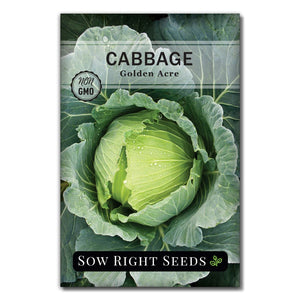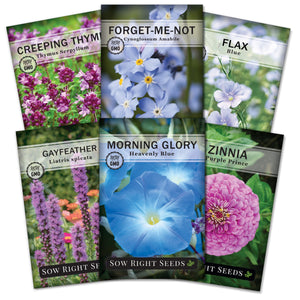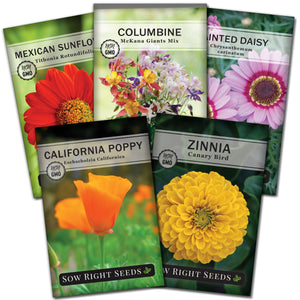Topics
Garden Design for Absolute Beginners: 6 Tips for Success
Garden designDid you know that taking the time to plan your garden can double your chances of success? Before you run out and buy a bunch of plants, take some time to follow our 6 basic garden design principles so you can avoid the mistakes most beginner gardeners make.
Designing a garden from scratch can seem a little overwhelming, but we'll give you all the tools you need to be successful and help you anticipate problems that you might encounter along the way.

6 Proven Tips for Planning a Successful Garden
1. Choosing the right location
If you choose plants that are well-suited to the location where they are planted, they will be healthy and grow well. It's a concept gardeners often use called "right plant, right place." So before you ever plant anything, you’ll want to consider whether your potential garden plot has the right quality of light, water, and soil.
2. Deciding how much to grow
After you’ve decided where you want to grow, next, you need to choose just how much you want to grow. Be realistic with yourself about how much work you’re willing to put into the garden. Don’t overplant and get discouraged, but don’t sell yourself short, either. Try to hit the sweet spot.
Make sure you consider how much space the plants take up as well, and if it will be comfortable to work the garden and harvest. Consider not only the spread of your plants but also how tall they will grow and how they may shade other plants throughout the day. Placing shorter plants where they can get more exposure without being shaded out by taller crops. Making a sketch of your garden may help you to visualize these details.

3. Getting your seeds
You’ll want to buy seeds to get started. If you are planning on doing any succession planting, don’t forget to buy enough seed. Buying early is wise because later in the year seeds become more scarce.
Think about the types of plants you want to grow. Are there companion plants like the Three Sisters that would work well with one another?
4. Gather your gardening equipment & test your soil
Make sure that you’ve got everything else you need to be successful, too. You may need to buy some new garden tools or make sure yours are well-maintained and ready for the growing season.
Get your soil tested to find out what amendments you need to improve your soil. Budget for mulch or gardening fabric for weed control or moisture retention. Perhaps you want to try your hand at container gardening and need to buy containers, or you are growing some plants that will need support, like a tomato cage or a trellis to climb.

5. Research your growing zone & mark important dates
Do the research to find out the best time for your zone to plant the crops you want to grow, and mark important dates on your calendar. Find out your last expected frost date in your region and work from there. If you’re starting seeds indoors, when do you hope to set them outside?
If you’re direct sowing, the same questions apply. This helps you know when your garden should be ready for new plants so that you’re not caught by surprise.
6. Plan for pest & disease control
Plan ahead for vermin, pest, and disease control. A simple step like rotating your crops (especially nightshades) will help you to keep ahead of microbes in the soil that carry disease and survive over the winter. You may also need a scarecrow, a fake owl, or netting to deter animals from gobbling up your seeds and tender plants.

Making a plan is good common sense for a gardener. Take a day to draw out your plan, complete with a sketch of your garden to help you visualize what you hope to accomplish.
Too often, new gardeners can get overwhelmed and think that they are bad at growing things, when really what happened is they neglected to come up with a plan! Save yourself stress and hardship and really think things through.
Your plan will help you to anticipate potential issues and to budget your time, energy, and money appropriately.
Resources for further help:
University of Illinois Extension - Planning a Garden
Home & Garden Information Center - Planning a Garden
Planning for the Home Garden
Garden checklist: Plan for your vegetable garden now
Written by Teresa Chandler











Leave a comment